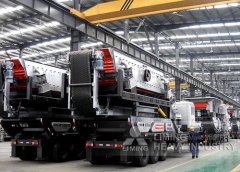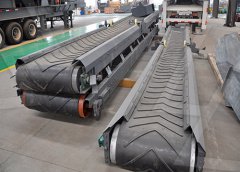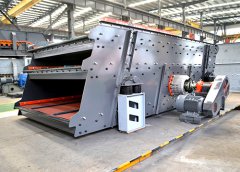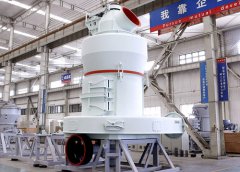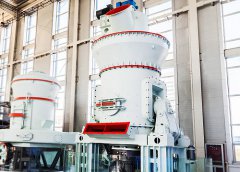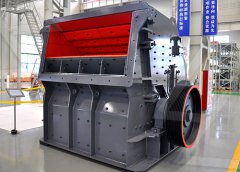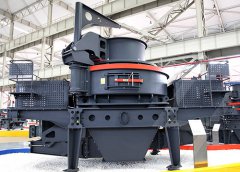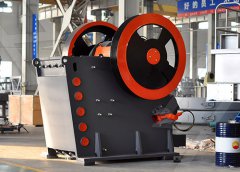
Separation and recovery of copper in Cu−As-bearing copper
Key words: copper electrorefining black slime; oxidation acid leaching; selective sulfide precipitation; leaching kinetics; copper recovery 1 Introduction Almost all Abstract: Copper electro-refining (Cu-ER) is the principal method for producing >70% of high or 99.97% pure copper cathodes from 97-99% Copper Refining Electrolyte and Slime Processing
احصل على السعر
Copper processing Definition, History, & Facts
Category: Science & Tech key people: Daniel Cowan Jackling Alexander Agassiz Meyer Guggenheim materials processing copper processing, the extraction of copper from its ores and the preparation of copper metal or Downloads Copper refining introduction PDF, Size 0.13 mb Copper Refining Labelled Process Diagram Image, Size 0.27 mb Copper Refining Unlabelled Process Diagram Image, Size 0.24 mb Copper Refining Map Image, Copper Refining Resource RSC Education
احصل على السعر
Metallurgical Process for Total Recovery of All Constituent
Copper anode slimes, the by-product of the copper electrorefining process, have been the subject of extensive investigation for recovering precious metals viz., Au, Copper is a relatively uncommon metal that is mostly produced as a by-product of copper and nickel refining. Copper poisoning can result in a variety of health problems, including Copper Refining an overview ScienceDirect Topics
احصل على السعر
Fundamental studies of copper anode passivation during
to the electrochemical nature of the copper refining process, various electrochemical techniques (i.e., cyclic voltammetry, potentiodynamic polarization, and About 80% of the world's primary copper is produced by concentration, smelting, and refining of sulfide ores. The other 20% is produced by heap leaching, solvent extraction, Extractive Metallurgy of Copper ScienceDirect
احصل على السعر
Chapter 14 Electrolytic Refining Semantic Scholar
Copper electro-refining (Cu-ER) is the principal method for producing >70% of high or 99.97% pure copper cathodes from 97-99% pure blister/fire refined-scrap copper During the electrolytic refining of copper, the impurity elements such as As, Sb and Bi gradually dissolve and concentrate in the electrolyte [3−5]. Minerals Engineering, 2007, 20(1): 26−33. [18] XU Zhi-feng, LI Qiang, NIE Hua-ping. Pressure leaching technique of smelter dust with high-copper and high-arsenic [J]. TransactionsSeparation and recovery of copper in Cu−As-bearing copper
احصل على السعر
Metallurgical Process for Total Recovery of All Constituent
Chalcopyrite is the most abundant copper-bearing mineral (approximately 80% of the world copper ore reserves) and is the main source of copper metal production [].At present, the industrial method employed to process chalcopyrite for metal production is pyro-electrometallurgy comprising comminution, flotation, smelting, converting, pyro Copper electro-refining (Cu-ER) is the principal method for producing >70% of high or 99.97% pure copper cathodes from 97-99% pure blister/fire refined-scrap copper anodes. While the inert and most of less soluble impurities settle as anode slime/sludge, other soluble impurities, particularly the metalloids (group VA/15 elements Copper Refining Electrolyte and Slime Processing Emerging Techniques
احصل على السعر
Electrorefining: Purification of Metals Unacademy
Copper has various properties like it’s the best alloy and high thermal conductivity etc. Copper refining or Electrolytic copper electrorefining is purified with the help of the refining process. In this process, impure copper is used as anode and pure copper tubes as cathode. There are some techniques used in the purification of crudeIntroducing TON electrorefining technology. TON is the leading provider of copper refining technology, with the industry’s widest range of solutions and a proven track record. Our electrorefining solution covers the entire refining process chain from anode to cathode. It integrates our process know-how and proven material handlingElectrorefining TON
احصل على السعر
Continuous electrolytic refining process of cathode copper
A blister copper anode plate, which contains 99.0–99.5% copper, is dissolute during the electrolytic refining process of copper in the CuSO 4 –H 2 SO 4 electrolyte system. Dissolution reactions of metals such as Fe, Ni, Pb, As, and Sb, and precipitation reactions of Au and Ag occur on the anode. As the concentration of Cu 2+ Copper Refining Electrolyte and Slime Processing Emerging Techniques. S. Acharya. Materials Science, Chemistry. 2013. Copper electro-refining (Cu-ER) is the principal method for producing >70% of high or 99.97% pure copper cathodes from 97-99% pure blister/fire refined-scrap copper anodes. While the inert and most.Chapter 14 Electrolytic Refining Semantic Scholar
احصل على السعر
(PDF) The Evolving Copper‐Tellurium Byproduct System
Tellurium, a byproduct of copper refining, critical to solar photovoltaics, is chosen as a case study and three commonly discussed byproduct-relevant strategies are selected: dematerialization ofThe solvent displacement crystallisation technique, which is an emergent method, has been employed to eradicate Sb in the copper electro-refining industry, which can remove 96.9% Sb in the copperAs, Sb, and Fe removal from industrial copper
احصل على السعر
Electrolytic Refining and Winning of Metals SpringerLink
Abstract. In electrolytic refining, the plates of crude metal are anodically dissolved in a suitable electrolyte, while “pure” metal is deposited on the adjacent cathodes. The electrorefining process was introduced about a hundred years ago to produce a substitute to fire-refined copper.Copper is typically extracted from oxide and sulfide ores that contain between 0.5 and 2.0 percent copper. The refining techniques employed by copper producers depend on the ore type, as well as other Learn About Copper ThoughtCo
احصل على السعر
Fundamental studies of copper anode passivation during
to the electrochemical nature of the copper refining process, various electrochemical techniques (i.e., cyclic voltammetry, potentiodynamic polarization, and galvanostatic measure- ment) have beenThese 8.7 Mt can be roughly split into two general processing routes for the recycling of copper scrap: smelting followed by refining, and direct melt (green flows in Fig. 1).Smelting and refining can recover copper from a multitude of different waste materials with a broad variety of material and elemental compositions.Current challenges in copper recycling: aligning
احصل على السعر
Melt refining and purification processes in Al alloys: a
Firstly, traditional melt refining techniques such as fluxing, floatation, and filtration were introduced. Secondly, more recent and modern Al melt purification methods such as sedimentation and distillation technologies, liquation and segregation processes, and high purity refining techniques were discussed. In comparison to copper andThis work focused on purifying copper electrolytes from a bismuth impurity on a laboratory scale. The electrolyte came from Polish copper electrorefineries with the content of main components, g/dm3: 49.6 Cu, 160 H2SO4. The electrolyte was enriched in bismuth by Bi2O3 addition. Purification of bismuth contamination was carried out using Purification of Industrial Copper Electrolyte from Bismuth Impurity
احصل على السعر
Processing of copper electrorefining anode slime: a review
Copper electro-refining (Cu-ER) is the principal method for producing >70% of high or 99.97% pure copper cathodes from 97-99% pure blister/fire refined-scrap copper anodes. Nickel-bearing copper anodes and anode slimes were studied using a variety of mineralogical and chemical techniques. In anodes containing <;0.3 pct Ni, the The removal of impurities from metallurgical grade silicon using the O2 and H2O-O2 gas blowing techniques was firstly studied by thermodynamics. The relationships between the boron content in refined silicon and the equilibrium partial pressures of gaseous boride species were established, which shows a theoretical limitation for boron removal Impurities Removal From Metallurgical Grade Silicon Using
احصل على السعر
Impurity Control and Removal in Copper Tankhouse Operations
Electrolytic copper refining makes it possible to obtain high purity metal, so the analysis of the main ways of impurity transition into electrolysis products is an actual problem. ImprovementAbstract: One of the final stages in refining copper is the removal of impurities by electrolysis-an important stage because a minimal impurity greatly reduces the conductivity of the metal. Removing impurities by electrolysis has been done commercially since the latter half of the 19th century, but modern advances in high-current-rectifier equipment Modern techniques in electrolytic refining of copper IET
احصل على السعر
Emission Estimation Technique Manual UNITAR
2.3 Smelting/Electro-Refining Copper 9 2.3.1 General 9 2.3.2 Smelting 9 2.3.3 Electro-refining of Copper 15 2.4 Leaching/Solvent Extraction/Electrowinning 15 2.4.1 Leaching 15 5.1 Techniques Available for Estimating Emissions of NPI Substances from Copper Concentrating, Smelting and Refining 32 6.1 Emission Factors for SO
احصل على السعر
